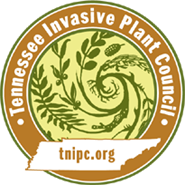Hypericum perforatum L.
Common St. John's-wort, Goatweed| Category |
|---|
| Shrub |

Description
Height
Common St. Johnswort grows to 4 feet (1.2 m).Stem
The plant has two raised lines down the stem, making the stem appear flat.Leaves
Leaves are opposite, sessile, elliptic, 0.4- 1.2 inches (1-3 cm) long and dotted with many pellucid glands.Flowers
Flowering occurs from June to September, when bright yellow flowers develop at the tips of the stems. Flowers have five petals and many stamens. Petals typically have black glands along the margins.Fruit
Fruits are three-chambered capsules with three persistent styles.Images
Photo: Norman E. Rees, USDA Agricultural Research Service, Bugwood.orgMore images of Hypericum perforatum
Life History
Common St. Johnswort is a perennial, rhizomatous herb that can reach 4 feet (1.2 m) in height. It is a member of the Hypericaceae. The flowers are hermaphrodite (have both male and female organs) and are pollinated by bees and flies. The plant is self-fertile. Plants have been used to treat mild depression, but have been shown to cause hyper photosensitivity. It also may be poisonous to cattle in large doses.Canary Island St. John's wort (Hypericum canariense) is an ornamental shrub with a height of 4-6 feet (1.2-1.8 m) making it much larger than the common St. John's wort. The leaves are also much narrower in H. canariense than in H. perforatum, and the sepals in H. canariense have marginal hairs. Dwarf St. John's wort (Hypericum mutilum) like its name implies is a smaller plant, about half the height of common St. John's wort, with one-chambered capsule unlike the common St. John's wort which has a three-chambered capsule. The dwarf St. John's wort is not as common, but its range is expected to expand and is currently associated with moist or riparian habitats.
Habitat
Plants inhabit rangelands, pastures, roadsides and forest clearings. It seems to grow best in sandy, gravelly soils, but is commonly found in heavy soils.Origin and Distribution
St Johnswort is native to Europe and was found in California around 1900. It spreads by seed and by underground and above-ground creeping stems. Seeds have a gelatinous coating that sticks to legs, hooves, boots, behicles, and other objects when the seeds are wet. Later in the day, after the dew exaporates, the seeds fall back to the ground. Seeds are widely distributed this way.Other States Where Invasive: CA, CO, KY, MT, NV, OR, SD, TN, WA, WY.
Federal or State Listed as Noxious Weed, Prohibited, Invasive or Banned: CA, CO, MT, NV, OR, SD, WA, WY.
Sources
California Department of Food and Agriculture, 2005, Noxious Weed Index, Hypericum perforatum, [online database].Usher. G. A Dictionary of Plants Used by Man. Constable 1974. ISBN 0094579202
